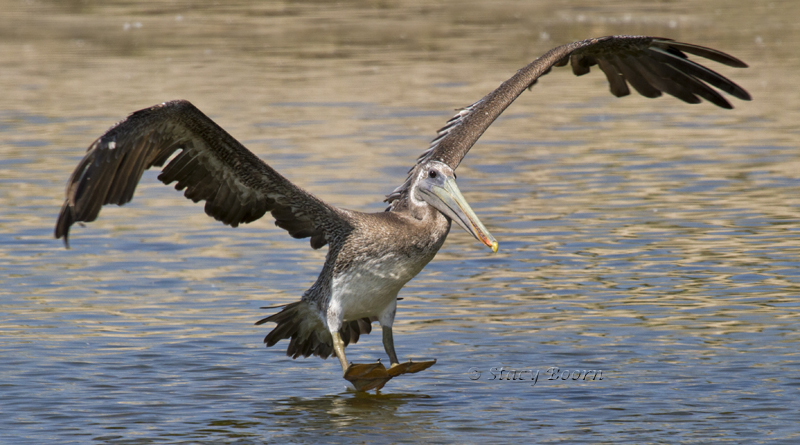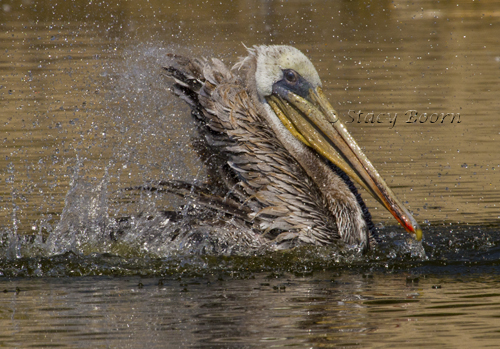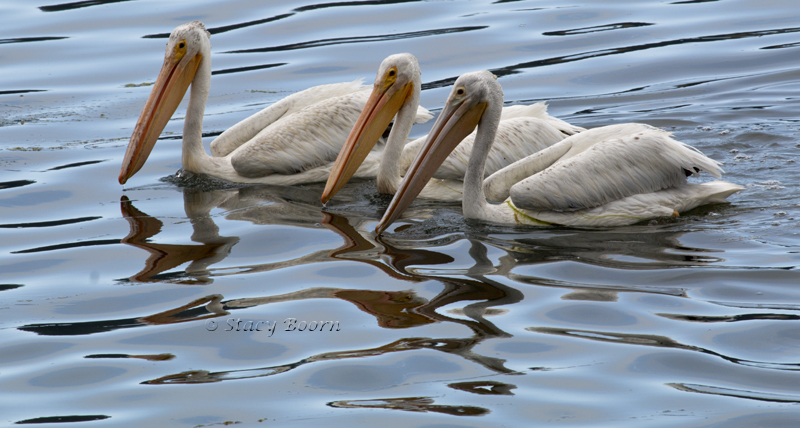 Maybe it’s because of their looks, a combination of the homely and comedic, that one expects the pelican to be more clumsy than charming. But “it ain’t so!â€
Maybe it’s because of their looks, a combination of the homely and comedic, that one expects the pelican to be more clumsy than charming. But “it ain’t so!â€
 Long before I learned that pelicans were a symbol of the Divine Feminine and the Mother Jesus of the medieval church, I loved them. Their wings seemed be the bridge between the heavens and the earth as they turned gracefully to descend to the waters or beaches below.
Long before I learned that pelicans were a symbol of the Divine Feminine and the Mother Jesus of the medieval church, I loved them. Their wings seemed be the bridge between the heavens and the earth as they turned gracefully to descend to the waters or beaches below.
In the Middle Ages, Saint Gertrude of Helfta had a vision of Christ as a pelican. Inspired by Psalm 102, the church interpreted the female pelican as a symbol of Christ, believing this magnificent bird was able to give her life-restoring blood to her dead offspring. This metaphor was based on a popular fallacy, yet the imagery of the mother pelican returning to her brood to restore them to life continues to spark my spiritual imagination.
It has been more than 25 years since Virginia Ramey Mollenkott reclaimed the biblical imagery of God as female. Of the pelican she has written, “The dream that the male pelican kills its offspring, while the female pelican bestows new life upon them, turns out to presage a reality for many of us in the contemporary faith community.â€
 She continues: “Exclusively male images of God are killing our spirit by distorting our understanding of masculinity, femininity, and mutuality. The recognition of biblical images of God as female, the infusion of positive female images into the language of faith, the achievement of balance between male and female references, will do a lot to bring us renewed health.†The Divine Feminine, page 47.
She continues: “Exclusively male images of God are killing our spirit by distorting our understanding of masculinity, femininity, and mutuality. The recognition of biblical images of God as female, the infusion of positive female images into the language of faith, the achievement of balance between male and female references, will do a lot to bring us renewed health.†The Divine Feminine, page 47.
Watching the brown pelicans gliding, flying, landing, diving and taking off along the Santa Cruz coastline beaches is a spiritual activity worth returning to on a regular basis. Even if the imagery of the divine feminine is not a part of your vision, the pelicans’ incredible grace offers you soul-renewing energy. Tracking and photographing them in flight is both a challenge and discipline to be pursued religiously!
 It is also worth noting that brown pelicans dive for fish as individuals while white pelicans are group fishers. Yet both seem to come together as groups to hunt for food. The white pelicans beat their wings on the surface of the water moving the fish to surface waters or, working together, they use their beaks to move water weeds, dislodging the fish among them. Thus, the pelicans can also be symbolic of group efforts made in order to identify and access resources. Lessons we need to relearn?
It is also worth noting that brown pelicans dive for fish as individuals while white pelicans are group fishers. Yet both seem to come together as groups to hunt for food. The white pelicans beat their wings on the surface of the water moving the fish to surface waters or, working together, they use their beaks to move water weeds, dislodging the fish among them. Thus, the pelicans can also be symbolic of group efforts made in order to identify and access resources. Lessons we need to relearn?
